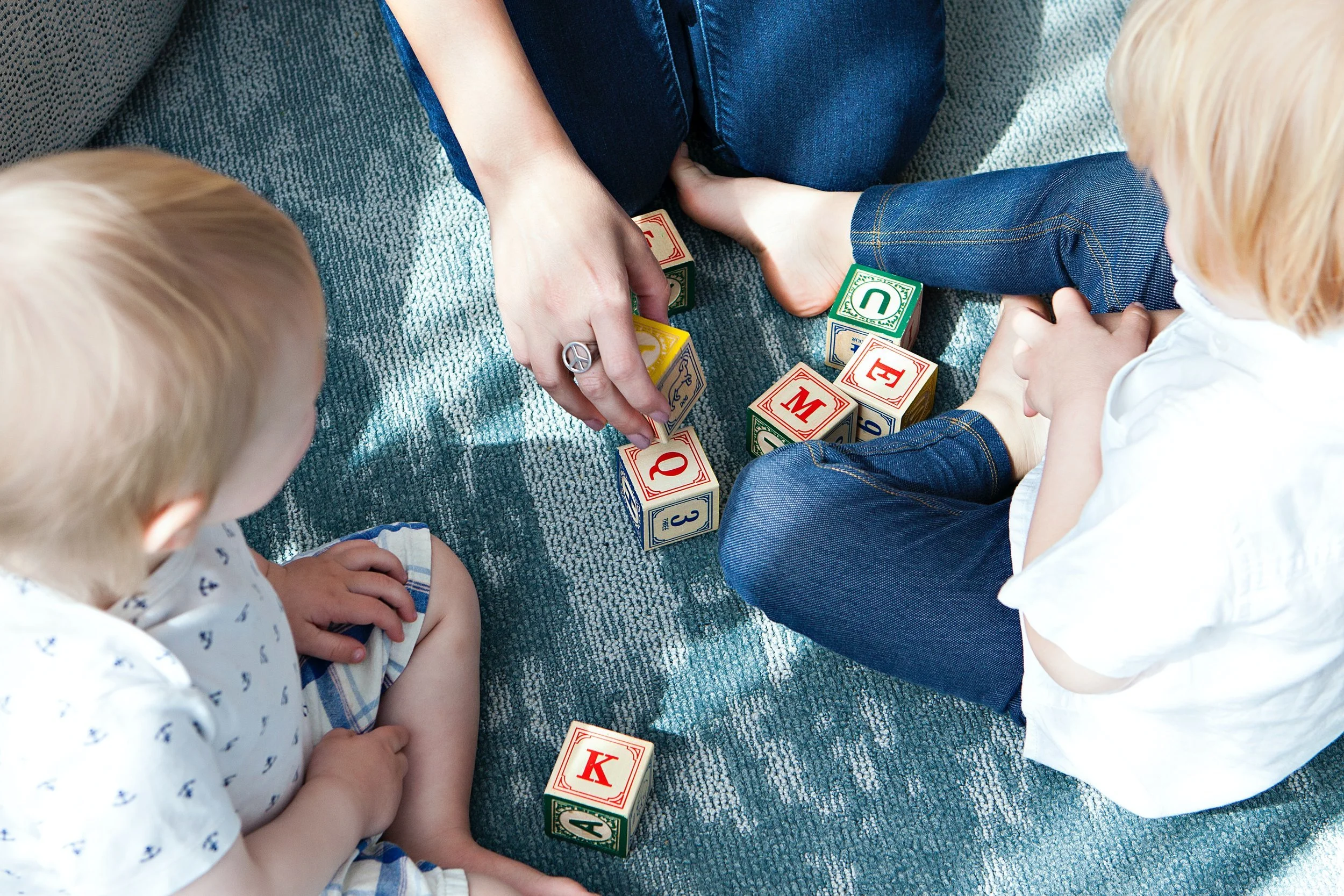Milestones vs Averages
I spend a lot of time on the phone talking to parents about their child and then charting out the best path forward: evaluation, giving it a couple more months to see how things progress, try this and let’s touch base in a couple of months, etc.
One of the questions that I spend the most time answering is how many words should a child have by a certain age. From these conversations, I have gleamed that it is fairly common knowledge among parents that by a child’s first birthday, they should have a least one word. However, after that, it gets a lot murkier for parents. This is further compounded by the fact that different pediatricians give different numbers! So your pediatrician says one number, but then you talk to your sister/friend/random mom at the playground and they were told a different number! Well, now what?! That is usually where a phone call to a speech pathologist comes in. This discrepancy typically arises from whether or not the pediatrician provided the milestone or the average number of words for your child’s age. Sadly, these two numbers are vastly different as you will soon see. But first, what is the difference between meeting a milestone and being in the average range?
A milestone is, to speak quite frankly, the bare minimum level that we are expecting a child to achieve. Research has shown that about 90% of the children that are of that age, have acquired that particular skill. Being in the average range, however, is where about 50% of the children of that age are performing. While we obviously want children to meet their milestones, it also leads to concerns of children falling behind if they are also not landing in the average range with their abilities.
Below you will find the milestones and averages of language development:
12 months:
Milestone: 1 word
Average: 5+ words
18 months:
Milestone: 10 words
Average: 50+ words
24 months:
Milestone: 50 words
Average: 300+ words and combining 2 words into novel utterances
(“thank you” counts as one word but “thanks Mama” is two)
36 months:
Milestone: 250 words
Average: 1000+ words and combining 3 words into
novel utterances
As you can see from the above numbers, as more time passes, the average number of words expected versus the milestone number becomes a shockingly large gap. This is due to the fact that children with a typically developing language system learn about 9-10 NEW words PER DAY from about 18 months of age until about the age of 6 years. If a child is falling behind this learning curve, this gap can impact a child’s ability to express themselves, develop social relationships, access pre-academic skills, and may cause frustration. Just because the words aren’t there, doesn’t mean that the thoughts aren’t.
Many children who are not meeting the average number of words, and especially true for children who are not meeting their milestones, frustration at not being able to communicate their thoughts, ideas, wants, and needs is very real. This is why you will find that while pediatricians tend to provide the milestone number, most speech language pathologists use the average number. We understand the importance of a child being able to express themselves and the snowball effect that being behind with language development can avalanche into.
About the Author
Janene Besch
Director/Speech-Language Pathologist
Janene Besch, née Martin, holds a Master’s degree in Speech Language and Hearing Sciences from San Diego State University and a Bachelor’s degree in Psychology from the University of California at San Diego. Janene is a member of the American Academy of Private Practice in Speech Pathology
Read more >
More Stories
Blog
What’s the Deal with Dyslexia?
Is your preschooler having difficulty with rhyming and learning letter sounds? Is your kindergartener getting frustrated while learning to read? It may be time to consult the literacy experts and dive into a discussion about dyslexia!
It’s All Connected: Language and Learning
Oh the pressure of parenthood. You are constantly told that EVERY decision you make will impact your child for the rest of their lives. Sounds scary right?! Well, what if I told you that you have an opportunity to gain information and take action to lay a foundation for lifelong learning?
Pets Are Paw-some Speech Buddies
We all love our pets. They are the backbone of our families and give us that soothing cuddle at the end of a long day. BUT have you ever thought about how pets can also contribute to your child’s speech and language development?
Engaging Minds: The Power of Sensory Bins.
Discover the magic of sensory bins for kids! Engage their senses, boost cognitive development, and enhance language skills through fun play. Create beach or zoo-themed bins and watch them learn and explore! Sensational summer awaits! Contact us for expert support.
Summer is a time of fun, sunshine, and opportunities for continued learning and exploration. For parents that may be less familiar with the educational impact of a long break, the “summer slide” is the term used to describe the …
The world is our playground! Play is critical to language development and presents children with an extraordinary amount of learning opportunities.
National Donut Day is June 2nd. Here is a fun craft to celebrate while working on speech skills!
Communication: Beyond the Basics of Speech and Hearing
As a parent, it can be frustrating to guess what your child wants or needs, especially when you have a never-ending to-do list on top of it all. And what is every parent’s thought during this stressful whirlwind of tantrums and tirades? “JUST TELL ME WHAT YOU WANT!”
After 10 years of serving Northern Virginia, we are proud to announce the addition of OWLS Therapy in Philadelphia’s Main Line!
Picture this: You are sitting in the doctor’s office filling out a questionnaire about your child’s development and whether or not they are showing signs of autism.











